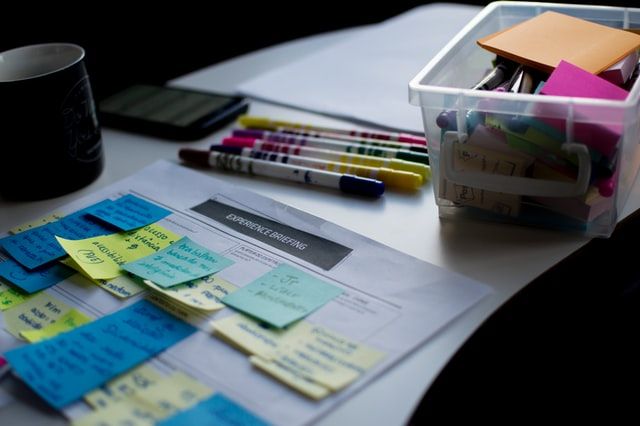It feels great to focus and zoom in on a project to just get things done. And when you’re working on a really big one (with a really big budget!), you might have the time and resources available to handle things this way with this single-minded vision and purpose.
However, if you’re like most freelancers, you’re probably juggling furiously and trying to figure out how to manage multiple projects at the same time without letting anything slip.
You’re wearing a lot of hats for your business and you’ve got several clients to please. What’s the secret to making everything come together and keeping your projects on time and under control?
1. Avoid context switching when managing multiple projects
We hear a lot about multitasking, but the truth is - your brain can’t really multitask. Instead, it can switch gears, quickly and frequently, but there’s a cost associated with this.
Trying to figure out how to manage multiple projects at once usually just means you’ll compromise work quality on everything you’re trying to tackle.
That frequent switchover that our brains do when we think we’re multitasking? It burns extra energy and makes it harder for us to focus, learn or get things done.
To handle multiple projects at the same time, your best bet is to block time and set aside specific hours for each project or each type of task.
You may be surprised at how easily you start powering through items on your task list when you batch them and do each task in its own time. Examples of effective steps freelancers can take to avoid context switching and to figure out how to manage many projects at once include:
- Setting aside a weekly time for invoicing clients (and building automated reminders into your process) instead of doing invoices as the need arises throughout the week
- Responding to emails in a batch once or twice a day, rather than opening and addressing them as they come in
- Drafting all social media posts for your freelance business during the same session, instead of hopping off and on social or compulsively checking it throughout the day
2. Get granular on what needs to get done
When you’re trying to get things done, you may catch yourself procrastinating on certain steps of a process because you know they’ll take more time than you have to commit at that moment.
As an example, say you typically sit down at your desk at 8:30 a.m., all the while expecting to have a scheduled client call at 9 a.m.
What do you do with that 30 minutes? It’s not enough time to dive wholeheartedly into a project, but you also don’t want to waste those precious minutes infinitely scrolling on Facebook.
If you work on breaking your projects down into very granular tasks and responsibilities, you can handle a few items at a time.
If you’re a freelance content writer, for example, you probably can’t churn out and publish a full post in a 30 minute time frame. However, you can break it down into steps like:
- Do research
- Write post
- Find 2 images
- Write metadata
- Write supporting social posts
Then, when you have a few minutes to work, you can easily pick up one or two of these tasks from your task list, ensuring your productivity stays up to par.
Does this advice go against the anti-context switching admonishment we shared earlier? No; in fact, it can make it easier to avoid context switching and manage multiple projects at once because you can group your like tasks and knock them out in one fell swoop.
3. Don’t overbook yourself by taking on too many projects at once
Even when you’re breaking down your tasks, you can’t expect to be productive during every hour of your work day. Creatives are often more productive when they work a shorter day (some sources peg four hours as a peak time frame for effective work).
When you are running your own freelance business, it can be impossible to keep short hours, because you’re not just a designer, or just an accountant, or just a web developer. You’re also a marketer, an IT help desk specialist, an invoice issuer, and a people and project manager.
If you need to force yourself to track time that you work versus time that you spend away from your desk, then put some tracking mechanisms in place that will hold you to your resolutions. Your goal should be to block and balance time, to find the combination that works best for you, then to set boundaries between work and regeneration.
It’s not easy to be a freelancer with a full plate of responsibilities. However, having work in the queue is almost always a good thing, and planning out how to manage multiple projects at once will make your workload more manageable as your business continues to grow and scale.



